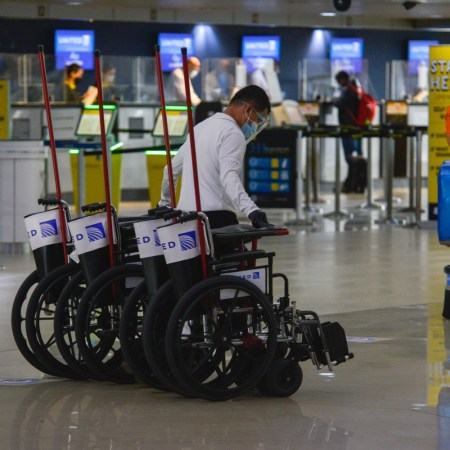Fact: Flying is one of the most carbon-intensive ways to travel. Emitting up to 100 times more carbon emissions per hour than train, bus or car rides, aviation accounts for around 4% of human-induced global warming. In addition to carbon emissions, planes also yield contrails — those line-shaped clouds produced by aircraft engine exhaust. Further, when multiple flights pass through the same area, the resulting condensation trails can form cirrus clouds, which “absorb radiation escaping from the surface, acting as blankets floating above the Earth.” In other words, these contrails can also play a role in raising (already rising) temperatures.
That’s according to reporting from the MIT Technology Review, which notes those cirrus clouds “could account for around 35% of aviation’s total contribution to climate change,” or “about 1% to 2% of overall global warming.” That said, there’s actually a pretty easy (and, frankly, obvious) solution. It isn’t very costly, either.
Carbon Passports: Are We Really on the Eve of Seeing Travel Rationed?
Some in the tourism sector see a huge environmental benefit to limiting flights, while others see an “uproar” waiting to happenBecause such a small percentage of flights (between 2% and 10%) are responsible for creating roughly 80% of the contrails, the idea is that simply rerouting them would help mitigate the effects exponentially. Preliminary research by Breakthrough Energy in conjunction with Google Research and American Airlines has substantiated as much. By using satellite imagery, weather data, software models and AI prediction tools to help pilots navigate contrail-dense areas during 70 test flights over a six-month period, American Airlines was ultimately able to reduce the total length of contrails by 54% when compared with flights that weren’t rerouted.
Of course, rerouting would have implications for fuel use. It could require more fuel, which would mean higher costs, likely for travelers. Additionally, as MIT Technology Review notes, flights taking longer routes in order to avoid producing contrails will inevitably wind up producing more greenhouse-gas emissions in the long run. There’s also the fact that cirrus clouds can aid in reducing global warming by “reflecting away short-wave radiation from the sun” to consider.
However, a new study in Environmental Research: Infrastructure and Sustainability revealed that “reducing the warming effect of contrails by 73% increased fuel costs by just 0.11% and overall costs by 0.08%, when averaged across those tens of thousands of flights.” So it stands to reason that the bump would be nominal.
As far as the benefits of cirrus clouds? It really comes down to a cost-benefit analysis and, from where we’re standing, it sounds like the benefit of rerouting planes exceeds the cost of not. Like anything else, though, it’ll probably take years to test this further and implement a new protocol, if it’s ever approved, at which point the Earth will probably be close to uninhabitable anyway.
This article was featured in the InsideHook newsletter. Sign up now.














